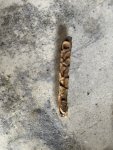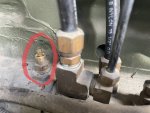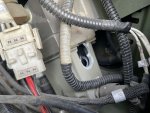Worldsworstfish
New member
- 20
- 24
- 3
- Location
- Montana
CTIS problems, tried troubleshooting on my own but have hit a wall.
When I plug in the CTIS and start the truck, the tires will inflate and the Highway Light will go solid. Within 15 seconds of the light going solid I hear solenoids clicking and the system will start venting until the tires are flat. It vents from the rear port and next to downpipe through the fitting I have pictured. If I shut the master off during this venting it will still continue to vent until tires are flat.
I filled up my tires with shop air and they stay up. So I assume that the wheel valves are holding, confirmed by loosening banjo bolts with no air leakage.
I took a wheel valve apart to figure out how it works, and still do t have any idea how it works so my second question is cansomeone explain how it works.
When I plug in the CTIS and start the truck, the tires will inflate and the Highway Light will go solid. Within 15 seconds of the light going solid I hear solenoids clicking and the system will start venting until the tires are flat. It vents from the rear port and next to downpipe through the fitting I have pictured. If I shut the master off during this venting it will still continue to vent until tires are flat.
I filled up my tires with shop air and they stay up. So I assume that the wheel valves are holding, confirmed by loosening banjo bolts with no air leakage.
I took a wheel valve apart to figure out how it works, and still do t have any idea how it works so my second question is cansomeone explain how it works.
Last edited:






